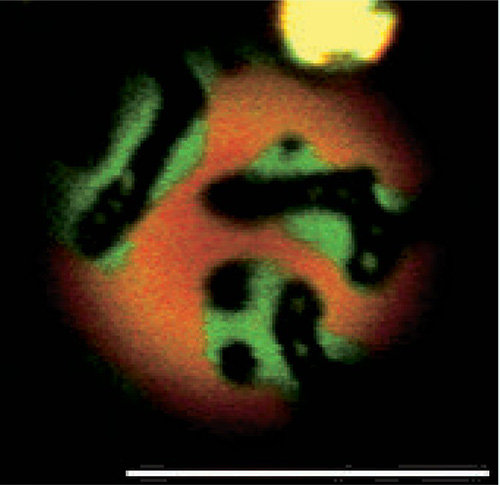
Organization and Dynamics of Biological Systems
*This Lab. is not accepting new student.TAKAGI Laboratory
Professor:TAKAGI Masahiro
E-mail:
[Research areas]
Biotechnology, Biophysics, Cell Signal Transduction
[Keywords]
Cell membrane, Physiological responses, Membrane Dynamics
Skills and background we are looking for in prospective students
Special knowledge and ability are “not” required in advance.
We are conducting research at the boundary of biology, physics and chemistry. We will teach kindly from the basics after enrollment. Your curiosity, motivation and energy for our research activity are very important.
What you can expect to learn in this laboratory
(1) To perform research about biological phenomena relating to interaction between molecules and self-organization.
(2) To understand life considering hierarchy from molecular level to organization / individual level.
(3) To convey research results in an easy-to-understand manner to the general public.
【Job category of graduates】
Faculty, Government official, Chemistry, Food, Cosmetics, Medicine, Precision machinery related jobs etc.
Research outline

Fig.1 Phase-separation of artificial model membrane (Giant liposome) bar = 10 µm
Functions of cell membranes are not only to distinguish between intracellular and extracellular spaces, but also to induce various physiological responses such as pain, sleep, excitement, sedation. Domain structure of membrane (lipid raft) with different fluidity was hypothesized to exist in the cell membrane and it is thought that the lipid raft plays an important role in cell signalling.
In our laboratory, we are using experimental systems of both artificial cell membranes (cell-sized liposomes) and actual living cells (immune cells and nerve cells). Moreover, advanced research projects in the boundary area of biology, chemistry, physics, and mathematical science are in progress.
■ Membrane dynamics induced by charged lipids
Biological membranes contain negatively charged lipids. These lipids have a great influence on cell signaling, ion flux and membrane potential, etc. However, it is not clear how the charged lipid molecules affect the membrane structure. Neutral lipids and charged lipids are mixed to prepare artificial membranes (liposomes) and observation of phase separation and morphology of the membrane are performed using confocal laser microscope and fluorescence microscope (Figure).
By adding charged lipids to the membrane, phase behavior greatly different from that of the liposomes with only neutral lipids. This result reveals that the charge of the lipid molecule causes a significant change in the membrane structure and raft stability. We also use this experimental method to analyze the function of various physiologically active substances such as local anesthetic, cold / warming sensation agent (menthol, capsaicin etc.).
■ Cell membrane dynamics and signal transduction
Human body is made up of about 60 trillion cells and each cell has its own function depending on the type of cells constituting each part of the body. In order to demonstrate these functions, cells have organelles consisting of unique membranes. Cell membranes are based on the bilayer structure of phospholipids and act as a barrier with permeability and at the same time have the function essential for maintaining the life of the cell and many physiological responses. We focus on "raft" which is a microdomain structure composed of saturated lipid and cholesterol-rich ordered phase of cell membrane. We are interested in stability and dynamics of the raft domain.
■Coarse-grained molecular dynamics simulation
We also analyze by theoretical model and computer simulation to compensate for the difficult part of experimental observations. In the theoretical model, we calculate free energy based on the thermodynamic approach and are promoting understanding of phase separation and membrane shape changes. We also calculated the behavior of phase separation on lipid membranes with charged lipids which are difficult to elucidate by experimental methods.
Key publications
- Naofumi Shimokawa et al. Formation of modulated phase and domain rigidification in fatty acids-containing lipid membranes. Phys. Chem. Chem. Phys., 19, 13252-13263 (2017).
- Ko Sugahara et al. Thermal stability of phase-separated domains in multicomponent lipid membranes with local anesthetics. Membranes, 7, 33 1-15 (2017).
- Naofumi Shimokawa et al. Phase diagrams and ordering in charged membranes: Binary mixtures of charged and neutral lipids. J. Phys. Chem. B, 120, 6358 (2016).
Equipment
Confocal microscopy
Atomic force microscopy
Calorimetry (DSC, ITC)
Cell culture equipment
Teaching policy
We always create an atmosphere of at home.
We provide guidance for knowledge and experimental skills related to Biology, Physics and Chemistry.
In addition to gaining experimental results, we also provide guidance with emphasis on the ability necessary for business and social activities, such as abilities to "think”, “judge” and, “express ".